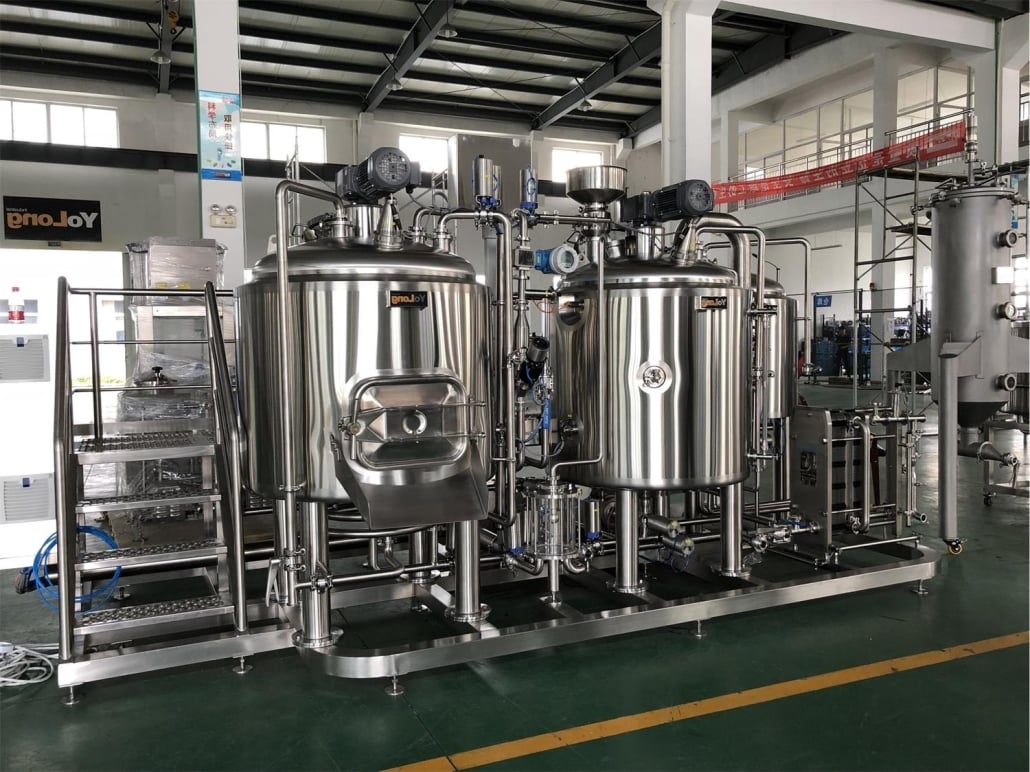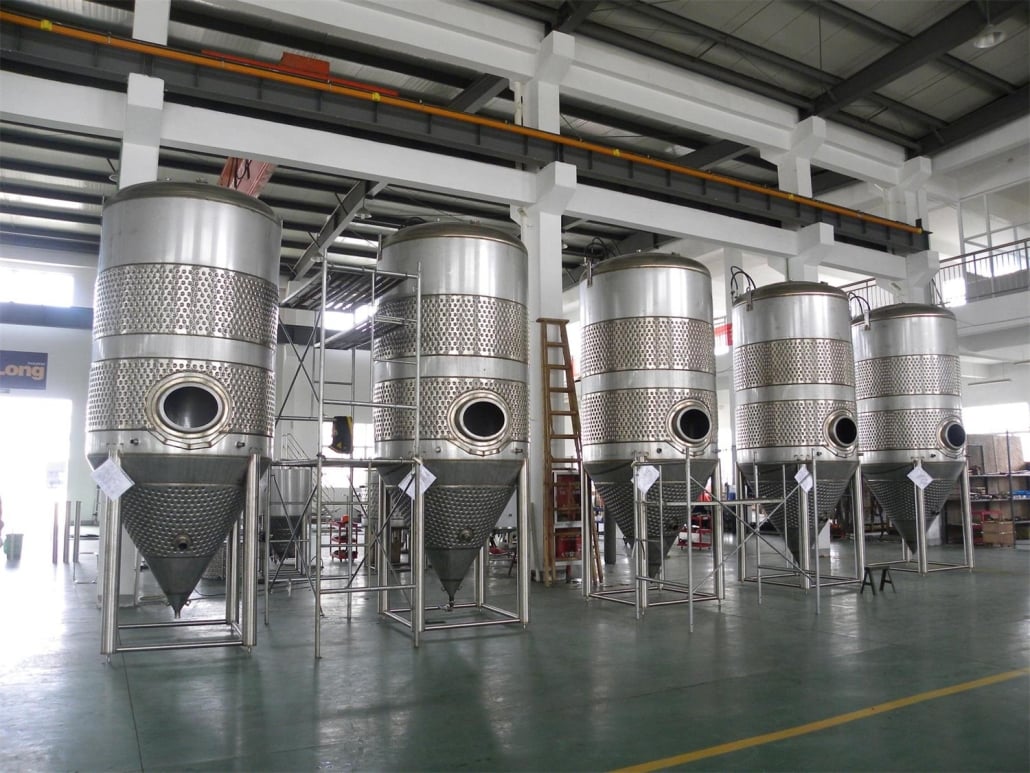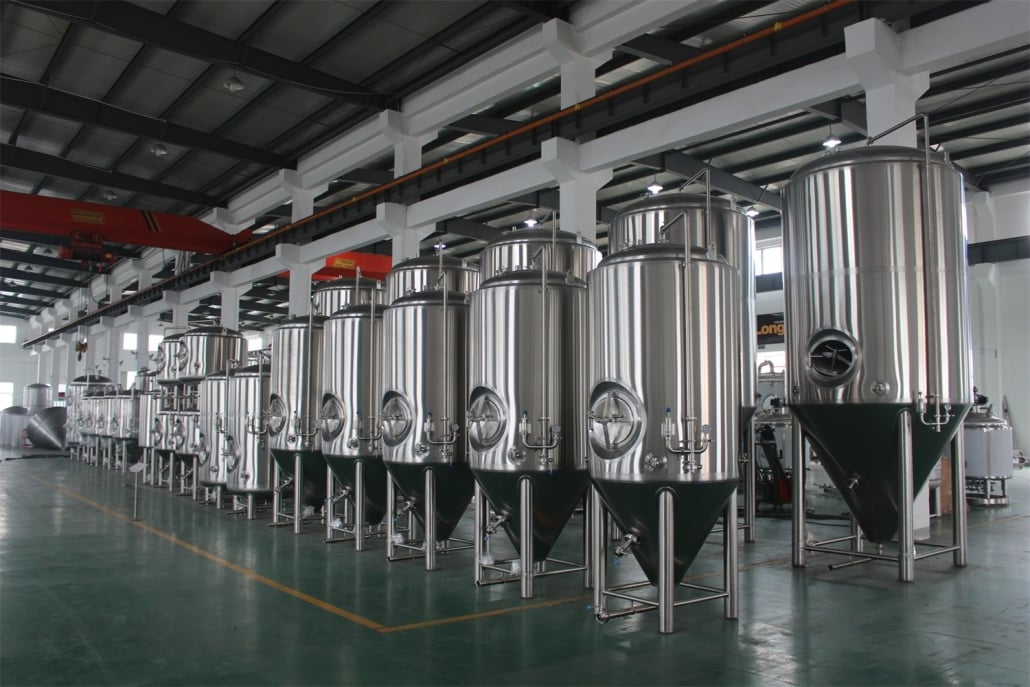A Beginner’s Guide to Micro Brewery Equipment
If you’re a beer lover with a passion for creating your own craft brews, starting a micro brewery may be a dream come true. But before you can get started, you need to understand the equipment required to turn your dream into a reality – Micro Brewery Equipment. In this beginner’s guide, we’ll explore the essential equipment needed for a microbrewery, discuss the different types of brewing systems available, and provide tips on how to choose the right equipment for your needs. So let’s get started!
Overview of Micro Brewery Equipment

Micro brewery equipment is specifically designed for brewing beer in small quantities, typically ranging from a few gallons to a few hundred gallons. Unlike larger commercial brewing systems, microbrewery equipment is more compact, easier to install, and can be operated by a single person.
One of the biggest advantages of microbrewery equipment is the ability to experiment with different recipes and ingredients. With a smaller system, brewers can create unique, flavorful beers that would be impractical or impossible to produce on a larger scale.
Another benefit of microbrewery equipment is the lower cost of entry. While commercial brewing systems can cost hundreds of thousands of dollars, microbrewery equipment is much more affordable, making it easier for aspiring brewers to get started.
Micro brewery equipment typically includes a variety of specialized brewing vessels and equipment, including brewing kettles, mash tuns, fermenters, and bottling or kegging equipment. These components work together to create a controlled brewing environment that allows brewers to produce high-quality, consistent beer.
Compared to commercial brewing systems, microbrewery equipment may have a lower production capacity and may require more frequent cleaning and maintenance. However, these challenges are often outweighed by the ability to produce unique, high-quality beers and the lower cost of entry.
In conclusion, microbrewery equipment is an essential tool for anyone looking to start a small-scale brewing operation. While it may differ from larger commercial brewing systems in terms of capacity and complexity, it offers a range of benefits that make it an attractive option for aspiring brewers. With the right equipment and know-how, anyone can turn their love of beer into a successful microbrewery business.
Basic Equipment Needed for A Micro Brewery Equipment
To start a microbrewery, there are several essential pieces of equipment that you’ll need. Here are some of the most important items:
First, you’ll need brewing kettles, which are used to boil and mix the ingredients needed to create your beer. The size of the kettle you need will depend on how much beer you plan to produce at one time.
Next, you’ll need fermenters, which are used to store and ferment the beer. Fermenters come in a variety of sizes and styles, from simple plastic buckets to more advanced stainless steel vessels with temperature control.
Fermentation Equipment

Fermentation is a critical step in the brewing process, and the type of fermentation vessel you choose can have a significant impact on the quality of your beer. Here are some of the most common types of fermentation vessels and their pros and cons:
Open-top fermenters are the most traditional type of fermentation vessel, and they allow for easy access to the beer during the fermentation process. However, they are also more susceptible to contamination and can be more challenging to clean.
Closed-top fermenters offer more protection against contamination and are easier to clean, but they can be more challenging to access during the fermentation process.
Conical fermenters are a popular option for many brewers, as they offer the benefits of both open-top and closed-top fermenters. They are easy to clean, offer good protection against contamination, and allow for easy monitoring and control of the fermentation process.
When choosing a fermentation vessel, it’s essential to consider your specific brewing needs and preferences. Open-top fermenters may be ideal for traditionalists, while closed-top fermenters may be better suited to those who prioritize cleanliness and ease of use. Conical fermenters offer the best of both worlds and are an excellent option for many brewers.
Ultimately, the best fermentation vessel for you will depend on your specific brewing needs and preferences. By understanding the pros and cons of each type of fermenter, you can make an informed decision and choose the equipment that’s right for you.
Kegging and Bottling equipment
After fermentation, it’s time to package your beer. The two most common options are kegging and bottling, and each method requires specific equipment. Here’s an overview of the different types of kegging and bottling equipment:
Kegging equipment typically includes a keg, carbon dioxide (CO2) tank, regulator, and dispensing system. Kegging is ideal for brewers who want to serve their beer on tap or who need to transport large quantities of beer.
Bottling equipment includes a bottling wand, bottle filler, and capper, and is a good option for those who want to distribute their beer in smaller quantities or who prefer the convenience of bottled beer.
When deciding which method to use, it’s essential to consider your specific needs and preferences. Kegging is a great option for those who want to serve beer on tap, while bottling is better suited to those who want to distribute beer in smaller quantities or who prefer the convenience of bottled beer.
Ultimately, the best option for you will depend on your specific brewing goals and preferences. By understanding the differences between kegging and bottling equipment, you can make an informed decision and choose the equipment that’s right for your needs.
In conclusion, the basic equipment needed for a microbrewery includes brewing kettles, fermenters, and bottling or kegging systems. By selecting high-quality equipment that meets your specific needs, you can create delicious, high-quality beer that will delight your customers and help your business succeed.
Types of Brewing Systems


When it comes to brewing systems, there are several different types to choose from. Here’s a brief overview of the most common options:
All-in-one systems are designed to simplify the brewing process by combining multiple vessels into a single unit. These systems typically include a mash tun, boil kettle, and fermenter, all in one compact package. All-in-one systems are ideal for brewers who are short on space or who want to streamline their brewing process.
Three-vessel systems are a more traditional option, with separate vessels for mashing, boiling, and fermenting. These systems offer more control over the brewing process, allowing brewers to fine-tune their recipes and achieve consistent results. However, they can be more complex to operate and require more space than all-in-one systems.
Brew-in-a-bag systems are a newer type of brewing system that combines the simplicity of all-in-one systems with the flexibility of three-vessel systems. With a brew-in-a-bag system, the grain is steeped in a mesh bag inside a single kettle, eliminating the need for a separate mash tun. This system is ideal for small-scale brewing and can produce high-quality beer with minimal equipment.
When deciding which brewing system to use, it’s important to consider your specific needs and preferences. All-in-one systems are great for beginners or brewers with limited space, while three-vessel systems offer more control over the brewing process. Brew-in-a-bag systems are a great option for those who want to experiment with different recipes and ingredients without investing in a lot of equipment.
Ultimately, the best brewing system for you will depend on your personal preferences, budget, and brewing goals. By understanding the differences between these systems, you can make an informed decision and choose the equipment that’s right for you.
Additional FAQs about Micro Brewery Equipment
- Q: What vessel materials and finishes are best for beginner microbreweries?
A: 304 stainless steel is standard; choose 316L for acidic beers or aggressive CIP. Specify internal surface finish Ra ≤0.6 μm to improve cleanability and reduce biofilm risk. - Q: How much cellar (fermentation) capacity should I plan relative to my brewhouse?
A: Target 2–4× brewhouse volume in fermenter capacity plus at least one brite tank. This supports multiple weekly turns and seasonal flexibility. - Q: What utilities do micro brewery systems typically require?
A: Expect 208–240 V (or 400–480 V) 3‑phase power, glycol chilling sized for concurrent fermentations and crash cooling, potable water with adequate flow/pressure, and CO2 supply. Steam systems need a code-compliant boiler and condensate handling. - Q: How can I minimize oxygen pickup with entry-level equipment?
A: Use closed transfers, CO2 purge hoses/vessels, gentle pump speeds, and pressure-capable unitanks for spunding. Aim for knockout DO <0.10–0.30 ppm and package DO <50–100 ppb. - Q: What’s the most impactful first automation upgrade?
A: A basic PLC/HMI recipe manager with PID temperature control, flow/level monitoring, and pump/valve interlocks. It improves repeatability and reduces training time and errors.
2025 Industry Trends for Micro Brewery Equipment
- Electrification and hybrids: electric HLTs/kettles and hybrid steam/electric approaches help navigate gas constraints and demand charges.
- Smart, modular cellars: affordable PLC/IoT with electronic batch records (EBR), CIP logs, and alarm histories now common at micro scale.
- Oxygen and hygiene focus: closed cold-side transfers, spunding, and inline DO checks to extend shelf life; validated CIP to cut defects.
- Efficiency-first design: heat recovery on wort HX, thicker insulation, VFD pumps, and sensor-led CIP endpoints reduce utilities 10–25%.
- Faster commissioning: FAT-tested, pre-wired skids and plug-and-play IO-Link sensors speed installs for small spaces.
2025 Benchmarks and Cost Signals for Micro Brewery Equipment
| Metric | Typical Target/Range | Why it Matters |
|---|---|---|
| Turnkey brewhouse (1–7 bbl) | $40k–$300k+ | Capacity, heat source, and automation drive price |
| Brewhouse efficiency | 70–86% | Predictable gravity and raw material yield |
| Water-to-beer ratio | 3.2–5.0:1 | Heat recovery and optimized CIP lower OPEX |
| Knockout DO | <0.10–0.30 ppm | Flavor stability and hop retention |
| Package DO | <50–100 ppb | Shelf life in distribution |
| Crash capability (FV) | 0.5–1.5°C per hour | Faster tank turns and clarity |
| CIP savings (sensor-led) | 10–20% water/chemicals | Cuts costs without hygiene compromise |
| Commissioning timeline | 5–14 days (prepared site) | Faster time-to-first-wort |
Sources: Brewers Association Quality and Sustainability benchmarking; Master Brewers Association of the Americas (MBAA) Technical Quarterly; OEM application notes and supplier datasheets (2024–2025). Validate locally with utilities and code officials.
Latest Research Cases
Case Study 1: Closed Transfers + Spunding Extended Shelf Life (2025)
- Background: A 5 bbl microbrewery reported hop fade and papery notes by day 60 in cans.
- Solution: Implemented CO2 purging of tanks/hoses, upgraded to 2.5 bar unitanks, standardized spunding at 0.8–1.0 bar near terminal gravity, and added inline DO spot checks at knockout and pre‑package.
- Results: Median package DO dropped from 136 ppb to 63 ppb; sensory staling descriptors reduced ~50%; average tank time shortened by ~1–2 days.
Case Study 2: Sensor-Driven CIP Reduced Utilities and Variability (2024)
- Background: High water/chemical use and inconsistent cleaning outcomes increased costs and risk.
- Solution: Added conductivity/time endpoints, verified spray coverage and return flow, and logged CIP cycles in the HMI for training/audits.
- Results: Water per CIP down 18%; caustic use down 20%; CIP cycle time reduced by 12–16 minutes; zero CIP-related batch holds over six months.
Sources: Brewers Association Quality and Sustainability resources; MBAA Technical Quarterly articles on oxygen control and CIP validation; manufacturer technical guides. Outcomes vary by SOPs and site conditions.
Expert Opinions
- Mary Pellettieri, Brewing Quality Consultant; Author, “Quality Management for Breweries”
- Viewpoint: “Prioritize cleanability and oxygen control in micro brewery equipment—validated CIP and closed transfers protect flavor and profitability.”
- Reference: Brewers Association Quality resources (https://www.brewersassociation.org/)
- John Mallett, Former VP Operations, Bell’s Brewery; Author, “Malt”
- Viewpoint: “Specify weld quality, surface finish, jacket zoning, and dependable instrumentation before advanced automation—fundamentals pay every brew.”
- Dr. Tom Shellhammer, Professor of Fermentation Science, Oregon State University
- Viewpoint: “Consistent thermal history and controlled oxygen exposure from brewhouse through fermentation are key to hop aroma retention and shelf stability.”
Practical Tools and Resources
- Brewers Association: Quality, Safety, Sustainability toolkits — https://www.brewersassociation.org/
- Master Brewers Association of the Americas (MBAA) Technical Quarterly — https://www.mbaa.com/
- Standards/compliance: ASME BPVC; EU PED; UL/CE — https://www.asme.org/ and https://single-market-economy.ec.europa.eu/
- Planning/QA software: Ekos — https://www.getekos.com/; OrchestratedBEER/NetSuite — https://www.netsuite.com/
- Recipe/process tools: Brewfather — https://brewfather.app/; BeerSmith — https://beersmith.com/
- DO/CO2 instrumentation: Anton Paar — https://www.anton-paar.com/; Haffmans/Pentair — https://foodandbeverage.pentair.com/; Zahm & Nagel — https://zahmnagel.com/
- Sanitation chemistry and validation: Five Star Chemicals — https://fivestarchemicals.com/
- Equipment marketplaces/directories: ProBrewer Classifieds — https://www.probrewer.com/; Brewers Association Supplier Directory
Last updated: 2025-09-04
Changelog: Added 5 FAQs tailored to micro brewery equipment; included 2025 trends with a benchmarks/cost table; provided two case studies on oxygen control and sensor-led CIP; added expert viewpoints; curated practical tools/resources with authoritative links.
Next review date & triggers: 2026-03-01 or earlier if BA/MBAA publish new microbrewery benchmarks, oxygen/CIP guidance changes, or OEM innovations affect cost/commissioning and hygiene best practices.
Share this entry
Interested in learning more about Brewing Systems including additional details and pricing information? Please use the form below to contact us!
YOLONG BREWERY EQUIPMENT FAQS
- Commercial Brewery / Craft Brewery / Microbrewery / Nanobrewery
- What is The Difference Between Craft Beer and Industrial Beer?
- The Bespoke Differences In Custom Brewing Systems
- Everything You Need to Know About Kettle Souring
- How to Choose Brewing Equipment for Your business?
- How To Choose The-Best Partner To Build Your Commercial Microbrewing System?
- Two Detection Sensors That You Need To Use In Your Brewhouse System
- Remote Control Applications in Brewing Equipment/How does it work?
- How To Clean Your Brand New Brewery Tanks?
